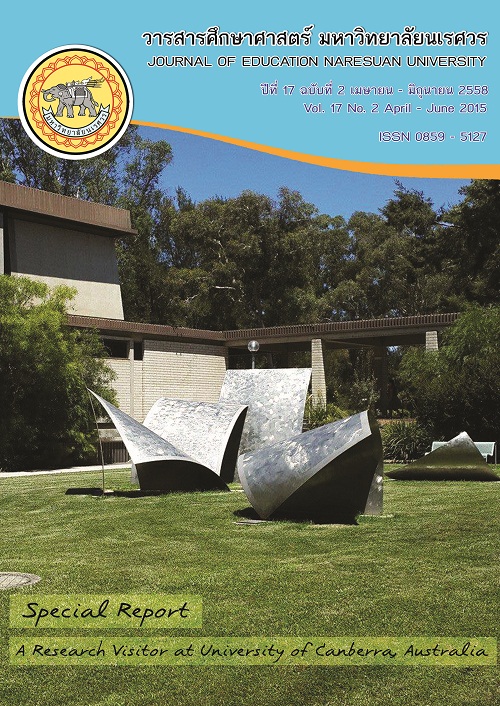แนวคิดการพัฒนามนุษย์ในพระพุทธศาสนา จากคัมภีร์ทีฆนิกาย
Main Article Content
บทคัดย่อ
บทคัดย่อ
การวิจัยในครั้งนี้ มุ่งเพื่อศึกษาแนวคิดการพัฒนามนุษย์ในพระพุทธศาสนา จากคัมภีร์ทีฆนิกาย โดยมีวัตถุประสงค์เฉพาะ 3 ประการ คือ 1) เพื่อวิเคราะห์เนื้อหาของพระไตรปิฏกจากคัมภีร์ทีฆนิกาย ภายในกรอบแนวคิดการพัฒนาทรัพยากรมนุษย์ 2) เพื่อสังเคราะห์แนวคิดการพัฒนามนุษย์ในพระพุทธศาสนา จากคัมภีร์ทีฆนิกาย จำแนก 2 ด้าน คือ ด้านหลักการ และด้านวิธีการพัฒนา และ 3) เพื่อตรวจสอบผลการวิเคราะห์และสังเคราะห์แนวคิดการพัฒนามนุษย์ในพระพุทธศาสนาจากคัมภีร์ทีฆนิกาย
ระเบียบวิธีวิจัย เป็นการวิจัยเชิงคุณภาพ 3 ขั้นตอน คือ ขั้นตอนที่ 1 วิเคราะห์แนวคิดการพัฒนามนุษย์ในพระพุทธศาสนา จากคัมภีร์ทีฆนิกาย สีลขันธวรรค โดยจัดหมวดหมู่ ข้อมูลตามกรอบของการพัฒนาทรัพยากรมนุษย์ ขั้นตอนที่ 2 สังเคราะห์แนวคิดการพัฒนามนุษย์ในพระพุทธศาสนา จากคัมภีร์ทีฆนิกาย ใน 2 มิติ คือ หลักการพัฒนา และวิธีการพัฒนามนุษย์ ขั้นตอนที่ 3 ตรวจสอบความถูกต้อง โดยผู้ทรงคุณวุฒิ 2 รอบ รอบที่ 1 ตรวจสอบความเหมาะสม ถูกต้อง ครอบคลุมของผลการวิเคราะห์แนวคิด โดยผู้ทรงคุณวุฒิ 11 ท่าน ด้วยวิธีสนทนากลุ่ม รอบที่ 2 ตรวจสอบซ้ำ โดยผู้ทรงคุณวุฒิอีกกลุ่มหนึ่ง จำนวน 11 ท่าน โดยเทคนิควิธีสัมภาษณ์
ผลการวิจัย พบว่า
แนวคิดการพัฒนามนุษย์ในพระพุทธศาสนา จากคัมภีร์ทีฆนิกาย เมื่อพิจารณาในมิติของหลักการพัฒนา พบว่า มี 4 หลักการ ได้แก่ 1) หลักความเป็นครูที่ดี มีความเป็นกัลยาณมิตร 2) หลักการพัฒนาตามศักยภาพของกลุ่มเป้าหมาย โดยแบ่งกลุ่มเป้าหมายในการพัฒนาออกเป็น 4 กลุ่ม แบ่งตามอุปนิสัยของมนุษย์ 6 ประการ และตามความชอบใจของมนุษย์ 4 ประเภท 3) หลักการพัฒนาอย่างต่อเนื่องและรอบด้าน และ 4) หลักการประเมินศักยภาพเพื่อพัฒนาให้ดีขึ้นตามขั้นตอน 5 ขั้น
แนวคิดการพัฒนาทรัพยากรมนุษย์ในพระพุทธศาสนา จากคัมภีร์ทีฆนิกาย เมื่อพิจารณาในมิติของวิธีการพัฒนา พบว่า ใช้ 2 วิธีควบคู่กัน วิธีที่ 1 คือ ใช้หลักธรรม 6 ประการ และวิธีที่ 2 คือ ใช้ยุทธศาสตร์ที่มีประสิทธิผล ได้แก่ 1) การวางแผน 4 ขั้นตอน 2) การพัฒนา 4 แนวทาง 3) การใช้เทคนิคที่มีสัมฤทธิผล 6 วิธี และ 4) การสร้างแรงจูงใจ 4 วิธี
คำสำคัญ: พระพุทธศาสนา/ การพัฒนามนุษย์/ คัมภีร์ทีฆนิกาย
Abstract
This research aimed to study the Buddhist concepts which based on human development study from the Dìghanikâya Text. The specific objectives were: 1) to analyze the contents of the Tripitaka in the scope of HRD; 2) to synthesize Buddhist concepts on Human development studied from the Dìghanikâya Text in two domains – the principles and the approaches; and 3) to verify the Buddhist concepts which had been analyzed and synthesized.
The qualitative research were used in three steps; firstly, the analysis of the Buddhist concept on Human development from the Tripitaka which focused on the Sîlakkhandhavagga from the Dìghanikâya Text, and classified the contents by means of HRD concepts; secondly, the synthesis concepts were many plated into two domains, the principles and the methods; last one, the results were verified twice by two groups of experts, 11 experts who met in a focus group discussion, and 11 other experts who were interviewed.
Research findings:
The principle domain of HRD principle which based on Buddhist concepts in Human development studied from the Dìghanikâya Text focused on four principles: 1) HR developers with the characteristics of good and supportive teachers; 2) HR development according to 4 different groups of individuals, 6 types of characters, and 4 types of attitudes; 3) holistic and continuous development of HR; and 4) utilization of five steps to evaluate and improve potentiality of the individual – change actions, change attitudes, change social environment, change cognition, and change the behaviors as aimed by Buddhism.
The method domain of HRD approaches which based on Buddhist concepts in Human development studied from the Dìghanikâya Text focused on two approaches which worked in parallel; firstly, six major Dharma should be followed by the person: 1) restraint in accordance with the monastic disciplinary code; 2) purity of conduct as regards livelihood; 3) restraint of the senses; 4) virtuous; 5) mindfulness and clear comprehension; and 6) satisfaction with whatever is one’s own, and secondly, four effective strategies should be applied: 1) using 4 steps in the planning stage; 2) using 4 approaches in the developing stage; 3) using 6 techniques to achieve; and 4) using 4 ways to motivate the person.
Key words: Buddhist/ Human development/ Dìghanikâya Text
Article Details
เจ้าของบทความมิได้คัดลอก หรือละเมิดลิขสิทธิ์ของผู้ใด หากเกิดการละเมิดลิขสิทธิ์ ไม่ว่าวิธีใด หรือการฟ้องร้องไม่ว่ากรณีใด ๆ ที่อาจเกิดขึ้นได้ กองบรรณาธิการวารสารศึกษาศาสตร์ ไม่มีส่วนเกี่ยวข้องทั้งสิ้น ให้เป็นสิทธิ์ของเจ้าของบทความที่จะดำเนินการ


